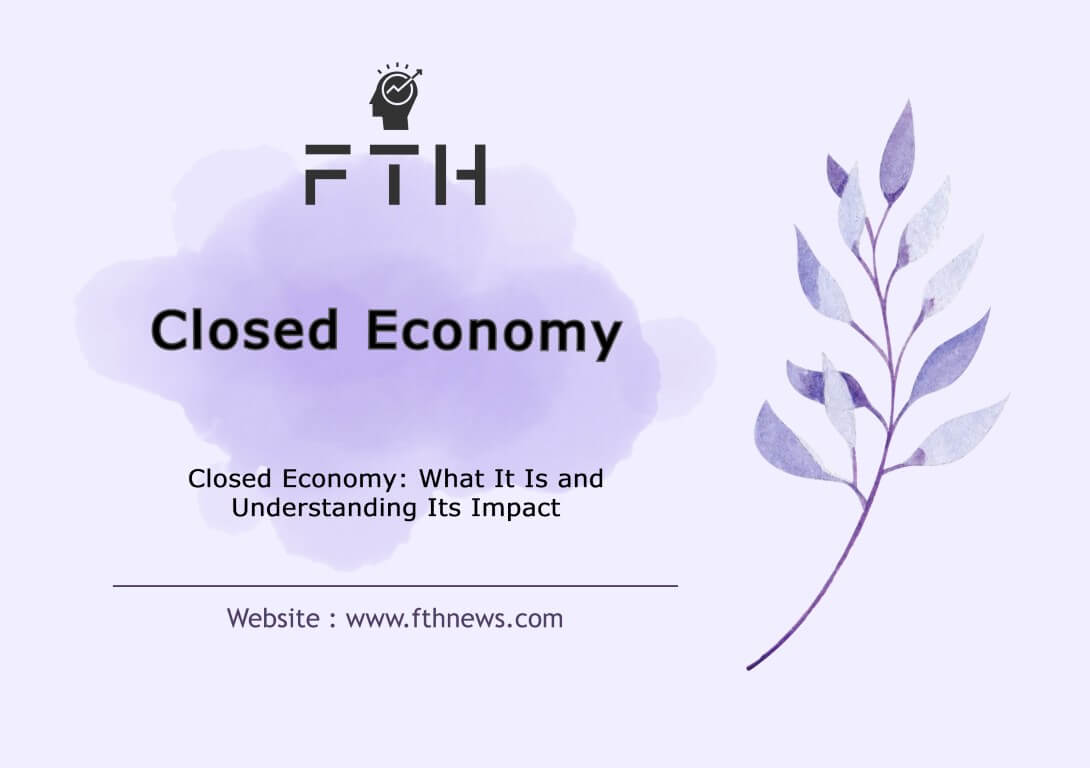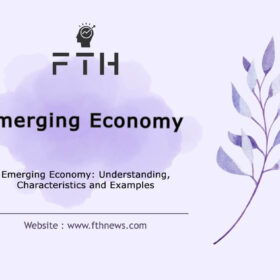
Closed Economy: What It Is and Understanding Its Impact
A closed economy is a fascinating concept that, in today’s interconnected world, is more theoretical than a reality. It typically refers to a country that operates in isolation, refraining from trade or financial exchanges with any other nation.
In simpler terms, in a closed economy, no imports enter the country, and no exports leave it. The primary objective of a closed economy is complete self-sufficiency, aiming to provide its domestic consumers with all they need solely from resources within its own borders.
Why Closed Economies are Scarce Today
The trend toward globalization in recent decades suggests that governments are increasingly open to participating in international trade. Closed economies seem to modern economic theory, which advocates for open domestic markets, capitalizing on comparative advantages to benefit all citizens. By efficiently allocating resources to productive operations, individuals and companies can enhance their wealth.
According to the International Organisation for Economic Co-operation and Development (OECD), relatively open economies tend to grow faster, offering better salaries and working conditions. Furthermore, global prosperity and opportunity contribute to stability and security worldwide.
However, maintaining a genuinely closed economy is difficult in modern society, partly due to the crucial role of raw materials in daily life and production. Many manufacturing powerhouses lack essential raw materials locally, necessitating imports. For instance, in 2021, the world’s top importers of crude oil included China, the United States, India, South Korea, and Japan. Even the United States, a significant importer of crude oil, simultaneously exports a substantial volume.
An even more striking example is lithium, a critical component in electric vehicle batteries. Most industrialized nations, including the United States, have limited lithium reserves and rely on imports, with Australia, Latin America, and China collectively accounting for 98% of global lithium production in 2020.
Pros of a Closed Economy:
Self-Sufficiency: Closed economies aim to produce everything they need domestically, reducing reliance on imports.
Protection of Domestic Industries: Domestic industries may benefit from reduced foreign competition, potentially protecting jobs and local businesses.
Stability: Closed economies may be less vulnerable to external economic shocks and global market fluctuations.
Cons of a Closed Economy:
Limited Choices: Consumers may have fewer options as the variety of goods and services can be restricted.
Resource Scarcity: Closed economies may lack access to certain resources, hindering innovation and economic growth.
Risk of Inefficiency: Overreliance on specific industries can lead to inefficiencies and reduced productivity.
Potential for Trade Barriers: Closed economies can lead to trade tensions and protectionist policies, which may harm international relations.
In today’s interconnected world, most countries prefer a more open economy to benefit from global opportunities and access resources efficiently. Closed economies are relatively rare and often face challenges related to resource scarcity and economic growth.
Closing Off Specific Sectors
While fully closed economies are virtually nonexistent today, governments may selectively close off specific industries or sectors from international competition. Some oil-producing countries, for example, have a history of prohibiting foreign petroleum firms from doing business within their borders.
Partially closed economies offer protection against excessive dependence on imports and the potential harm to domestic producers struggling to compete at low international prices. Governments may employ trade controls such as tariffs, subsidies, and quotas to support domestic industries, a practice known as protectionism.
In 2018, the United States, known for relatively low tariffs overall, imposed a 25% tariff on steel imports and a 10% tariff on aluminum imports to protect domestic producers from unfair foreign competition.
Measuring Openness
One way to gauge the degree of an economy’s openness is by considering imports and exports as a percentage of its gross domestic product (GDP). For example, Sudan has one of the most closed economies today, with imports representing just 1.9% of its GDP and exports at 2.3%. In contrast, the United States has higher figures, with imports at 13.3% and exports at 10.2%.
Closed Economy: Unique Perspective
To make this content unique to this platform, consider sharing personal insights, opinions, or experiences related to closed economies and their implications. Encourage readers to engage with the topic, share their thoughts, and ask questions.
In conclusion, while completely closed economies are rare in today’s globalized world, the topic of closed economies remains relevant due to the selective practices of governments, the challenges of raw material availability, and the ongoing debate about protectionism. Understanding the nuances of open and closed economies is essential for anyone interested in international trade and economic policies.
The effect of a closed economy on the economy and resources
A closed economy, by definition, does not engage in international trade, which means it produces and consumes all goods and services domestically. Here are some key effects:
Limited Access to Goods and Services: In a closed economy, the availability of goods and services is restricted to what can be produced within the country’s borders. This can lead to limited choices for consumers and potentially higher prices, as domestic producers may face less competition.
Resource Allocation: In a closed economy, resource allocation is determined solely by domestic factors. This can lead to inefficiencies, as the country may not be able to allocate resources to industries where it has a comparative advantage. As a result, the economy may not reach its full potential.
Economic Self-Sufficiency: Closed economies aim for self-sufficiency, which means they strive to produce everything they need domestically. While this may enhance a sense of independence, it can also lead to overreliance on certain industries and vulnerability to supply disruptions or changes in consumer preferences.
Fair Distribution of Resources: The impact on the fair distribution of resources in a closed economy can vary. It may lead to protectionism and the preservation of certain industries, potentially protecting jobs and local businesses. However, it can also lead to income inequality, as industries that rely on protectionism may benefit more than others.
Innovation and Competition: Closed economies may lack exposure to international competition and innovation, which can hinder technological advancements and economic growth. Open economies often benefit from competition and the influx of new ideas and technologies.
In contrast, open economies have fewer restrictions on trade and the movement of production factors like labor, capital, and technology. They often place special emphasis on foreign trade and foreign private sector investment
The effects of an open economy can include:
Access to a Wide Range of Goods: Open economies have access to a diverse range of goods and services from around the world, providing consumers with more choices and potentially lower prices.
Efficient Resource Allocation: Open economies can allocate resources more efficiently by focusing on industries where they have a comparative advantage. This can lead to increased productivity and economic growth.
Economic Integration: Open economies are more integrated into the global market, allowing for increased opportunities for trade, investment, and economic development. This can lead to job creation and higher incomes.
Competition and Innovation: Open economies benefit from international competition, which encourages businesses to innovate and become more efficient. This can drive technological progress and improve overall living standards.
Fair Distribution of Resources: While open economies can lead to economic growth, they may also face challenges related to income inequality and job displacement. Effective policies are needed to ensure that the benefits of economic openness are fairly distributed.
In conclusion, the choice between a closed or open economy has significant implications for an economy’s growth, resource allocation, access to goods and services, and the distribution of resources. Each approach has its advantages and challenges, and governments often adopt a mix of policies to strike a balance between economic self-sufficiency and participation in the global economy.
How Does a Closed Economy Work?
A closed economy, also known as an autarky, operates without engaging in international trade or financial exchanges with other countries. In a closed economy, all economic activities, including production, consumption, and resource allocation, are confined within the nation’s borders. Here’s how a closed economy typically works:
Domestic Production:
A closed economy aims to produce all the goods and services needed for its citizens within its own territory. This entails a focus on domestic production across various industries, from agriculture and manufacturing to services.
Resource Allocation:
Resource allocation in a closed economy is determined by domestic factors and government policies. The country seeks to allocate its resources efficiently to meet the demands of its population.
Self-Sufficiency: The primary goal of a closed economy is self-sufficiency. It aims to reduce or eliminate dependence on imports from other countries, especially for essential goods and resources.
Trade Restrictions: A closed economy typically imposes trade restrictions, such as tariffs, quotas, and import bans, to limit or control foreign trade. These measures are designed to protect domestic industries and resources.
Limited Export Activities:
In a closed economy, export activities are limited or nonexistent. The country primarily focuses on meeting the needs of its domestic market and does not actively seek foreign customers for its products or services.
Limited Access to Foreign Goods:
Citizens have limited access to foreign goods, as imported products are either heavily regulated or unavailable. This can result in a reduced variety of consumer choices.
Economic Self-Reliance:
A closed economy emphasizes economic self-reliance and may develop policies to support domestic industries and stimulate economic growth without relying on international markets.
Challenges and Vulnerabilities:
While a closed economy can foster a sense of independence, it can also lead to challenges and vulnerabilities. For example, it may face difficulties in accessing specific resources that are not readily available domestically. Additionally, it may be less responsive to changing global market dynamics.
Resource Efficiency:
A closed economy seeks to maximize the efficient use of its resources and often places a strong emphasis on domestic productivity and innovation.
It’s important to note that in today’s globalized world, truly closed economies are rare. Most countries engage in international trade to some extent to access resources, goods, and services that may not be readily available within their borders. Open economies, which encourage international trade and investment, have become the norm, as they provide opportunities for growth, innovation, and access to a wider range of products and resources. Closed economies are more of a historical and theoretical concept, but they offer valuable insights into economic self-sufficiency and protectionism.
Countries That Have a Closed Economy
Countries with completely closed economies, also known as autarkies, are exceedingly rare in today’s interconnected world. While some countries may have limited their international trade and financial exchanges for various reasons, very few are entirely self-sufficient and cut off from the global economy. One notable example often cited is North Korea. Here are a few details:
North Korea: North Korea is often considered one of the most closed economies in the world. The country’s self-reliant ideology, called “Juche,” promotes economic self-sufficiency and limits international trade. North Korea has strict controls on imports and exports, and it is known for its isolationist policies.
However, even North Korea, despite its efforts to maintain a closed economy, is not entirely cut off from the world. It engages in some limited trade, particularly with China and, to a lesser extent, Russia.
In the modern era, the global economy is highly interconnected, and most countries participate in international trade and financial exchanges to access resources, goods, and services that are not readily available within their borders. Closed economies are more of a historical and theoretical concept, and they often face challenges related to resource scarcity and the ability to keep up with technological advancements in a globalized world.
FAQ
A closed economy is like a self-sustaining island, where a country produces and consumes everything within its own borders, avoiding trade with other nations. It’s economic independence in isolation
North Korea serves as a notable example of a closed economy in the modern world, with limited international trade and a strong focus on self-sufficiency.
A closed economy has both pros and cons, depending on the specific goals and circumstances of a country. It can promote self-sufficiency but may limit access to global resources and growth opportunities through international trade. Most countries engage in trade to benefit from global opportunities and resources.
Closed economies can be caused by factors like national security concerns, protectionism to shield domestic industries, the pursuit of self-sufficiency, specific political ideologies, historical isolation, trade imbalances, and government policies.














